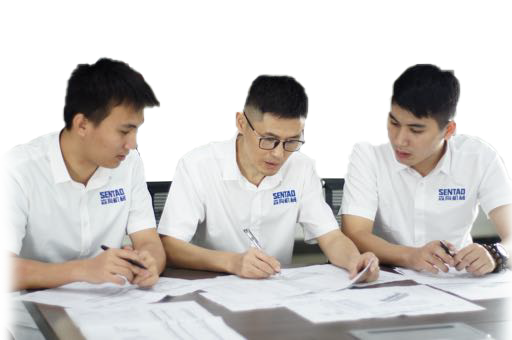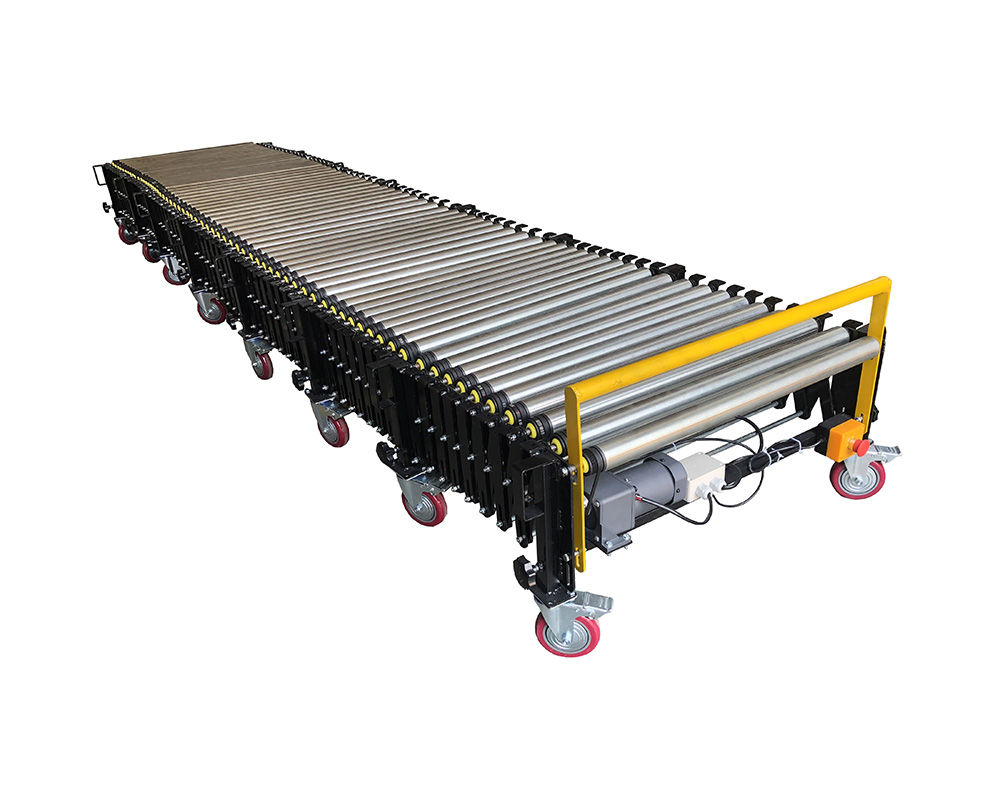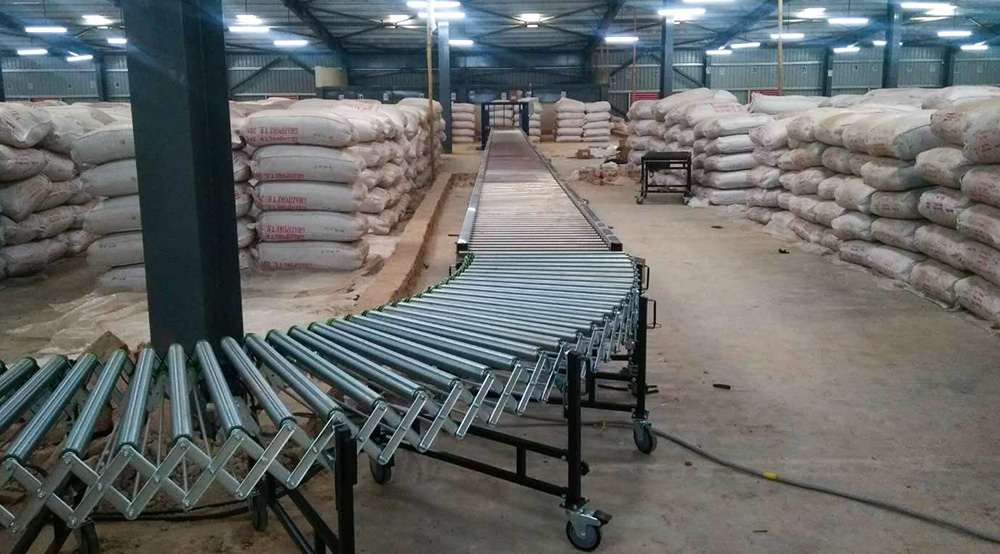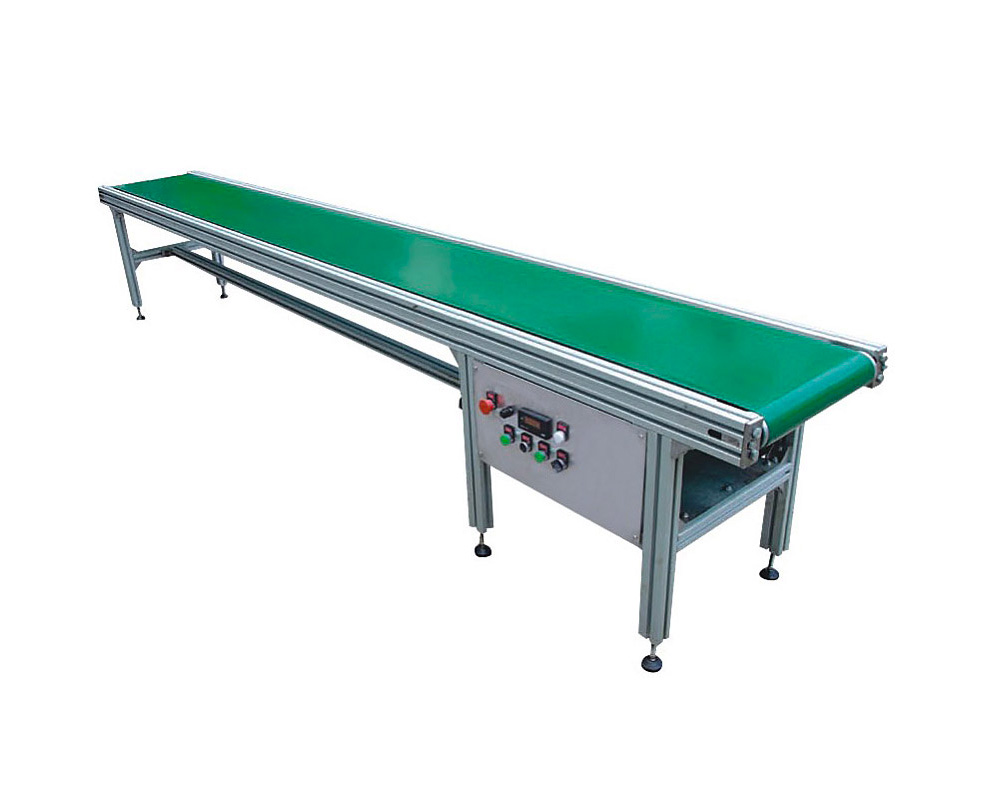Need Help?
We are here to help.
Our sales professionals can assist you in determining the type of components and solutions needed for your custom application.



A conveyor is a machine that evenly conveys bulk or piece-packed goods along a certain line from the loading point to the unloading point in a continuous manner. Compared with the lifting machinery, the conveyed goods are conveyed non-stop along a certain line when it works; the loading and unloading of the working components are carried out in the process of movement, without stopping and with less starting braking; the bulk goods to be conveyed are distributed on the bearing components in a continuous form, and the conveyed component goods are also moved in a continuous manner in a certain order.
Because the conveyor can continuously carry a large number of goods in a zone, the handling cost is very low, the handling time is more accurate and the cargo flow is stable, therefore, it is widely used in modern logistics systems. From a large number of the automatic three-dimensional warehouses, logistics distribution centers, large yards at home and abroad, its equipment in addition to lifting machinery, most of them are continuous conveyor handling systems, such as inbound and outbound conveyor system, automatic sorting conveyor system, automatic loading and unloading conveyor system, etc… The whole handling system is controlled by the central computer, forming a complete set of complex and complete goods conveying and handling system, a large number of goods or materials in and out of the warehouse, loading and unloading, sorting, sorting, identification, measurement, and other work are completed by the conveyor system. In the modern cargo handling system, conveyor plays an important role.

This conveyor machine is working
Conveyors have the following characteristics.
①Higher movement speed and stable speed can be used.
②Higher productivity.
③Under the same productivity, the weight is light, the size is small, the cost is low, and the driving power is small.
④Lower load on the parts of the transmission machinery and less impact.
⑤Compact structure, easy manufacturing and maintenance.
⑥Conveying goods line fixed action single, easy to realize automatic control.
⑦The load is uniform during the working process, and the power consumed is almost constant.
⑧It can only be conveyed according to a certain route, and each model can only be used for a certain type of goods, and it is generally not suitable for transporting single items of great weight, and its versatility is poor.
⑨ Most of the continuous conveyors cannot pick up the goods by themselves, and thus need to use certain feeding equipment.
Classification of conveyors.
According to the different ways of installation, conveyors can be divided into two categories: fixed conveyors and mobile conveyors. Fixed conveyor means that the whole equipment is fixedly installed in one place and cannot be moved again. It is mainly used for fixed conveying occasions, such as special docks, moving goods in warehouses, conveying between production processes in factories, receiving raw materials and issuing finished products. It has the characteristics of large conveying capacity, low power consumption per unit and high efficiency. Mobile conveyor means that the whole equipment is mounted on wheels and can be moved. It has the characteristics of high mobility, high utilization rate and timely arrangement of conveying operation to meet the loading and unloading requirements. This type of equipment is not too high in conveying capacity and not long in conveying distance, and is suitable for small and medium-sized warehouses.
According to the different structural features, conveyors can be divided into conveyors with flexible traction members and conveyors without flexible traction members. The working characteristics of conveyor with flexible members are that the material or goods are conveyed in a certain direction by the continuous movement of the traction members. The traction member is a closed system of reciprocating cycle, usually a part of the transported goods, another part of the traction member back, common belt conveyor, slat chain conveyor, bucket elevator, vertical lifting conveyor , etc. The working characteristics of the conveyor without flexible members is to use the rotational motion or vibration of the working members, so that the goods are transported in a certain direction, its conveying members do not have the form of reciprocating cycle, common pneumatic conveyor There are pneumatic conveyors, screw conveyors, vibrating conveyors, etc.

According to the different forms of conveying cargo force, conveyors can be divided into mechanical, inertial, pneumatic, hydraulic and other major categories; according to the nature of the goods, conveyors can be divided into continuous conveyors and intermittent conveyors. Continuous conveyor is mainly used for bulk cargo handling. Intermittent conveyors are mainly used for the conveying of assembled unit goods (i.e., packaged goods), so they are also called unit load conveyors.
Our sales professionals can assist you in determining the type of components and solutions needed for your custom application.

Workshop 1,No.6,Liwei Industrial Zone, Shangbai Avenue,Luocun,Shishan Town,Nanhai,Foshan City,Guangdong,China
Mon — Sat: 8AM — 6PM